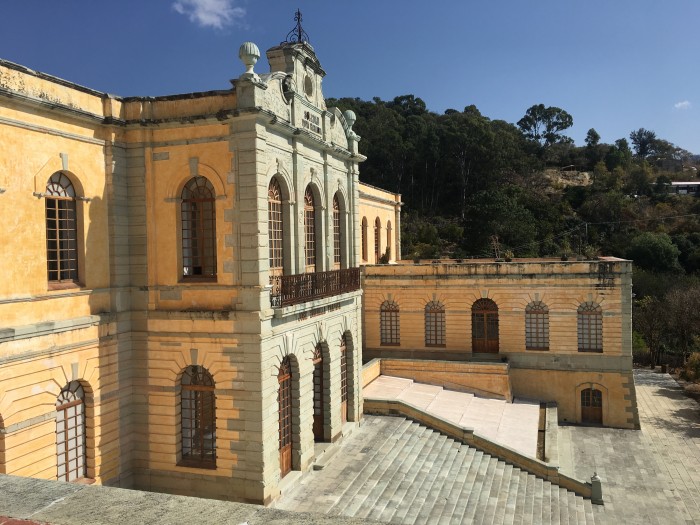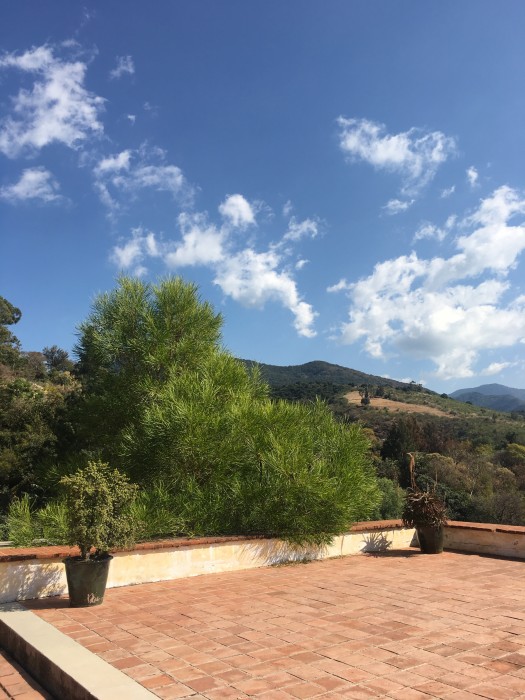
Thin sheets of water run down the feature behind the stairs
This facility, a former mill, was converted into an art space in 2006. The factory itself was constructed in the late 1800s, and it’s been renovated in subtle ways, largely through the introduction of gravity-powered water features that re-imagine the building in modernist terms. I arrived in the morning, and enjoyed a walk through the facility. My footsteps were not particularly loud, but they were enough to awaken a police officer who was dozing off at the entrance to the grounds.

We talked here
Why a police officer, though? In fact, there are no musuem workers as such here, but rather a few police scattered throughout the building, a jarring phenomenon to say the very least. I asked one of them if there was a map of the facility, and we ended up having a long conversation about the art center, his work, the disappearing flora of the hillside behind the center, Oaxacan cooking traditions, and so on. P (not his actual initial) said that he’d been working there for about a year and a half; some of his colleagues have been at the center for ten years. He’d like to stay, he says, because it’s very tranquil, and he gets to interact with a lot of different people. P knew practically nothing about art before he came, and now he feels more comfortable with it.
As I reflected on this experience, I thought back to a moment during a march in Los Angeles after the 2016 election in which I saw people high-fiving the police officers that were lining the road. This gesture struck me as somewhat foolish, since the cops were only here to “restore order”—that is to say beat everyone up—if things got out of hand. The situation at San Agustín strikes me as different, though. Even though the presence of police officers (policia auxiliar, to be fair, I guess) in this space put me on my guard, P was thoughtful, gentle, curious to share knowledge, and open to silence. Make All Cops Work in Museums? Or is that giving far too much credit to art?

